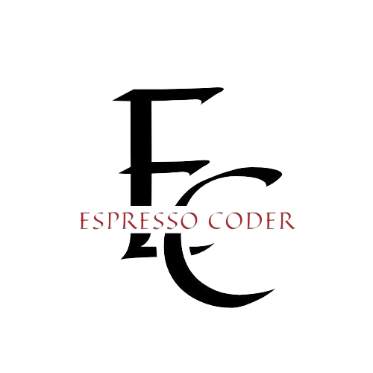If you’re a tech student frequently staring at a blank page, you might be reassured to learn that you’re not the only person with a writing problem. This issue is common for tech professions, like those of coders and engineers, whose thinking approaches and problem-solving strategies are different from those of turning ideas into word sequences. Coding is a world of signs and figures, and academic writing may be hard to decipher and master at first glance.
Yet, with a proper approach, this goal is attainable even for tech specialties. This article dwells on the principles of academic writing in a coding-like manner to help technical minds decipher its mechanics. With these tips, you may rely on an online essay writing service less frequently, as you will master the nuances of academic composition and liken the process to coding algorithms.
Contents
Create an Essay’s Structure in a Coding Manner
Structure is integral in programming, as any developer needs to follow a clear framework to build working code. Academic writing is similarly structured, and it can be treated from a programming angle. For instance, an essay’s structure may look vague and confusing at first. But what happens if you translate it into your familiar coding language? You’re likely to see something like this:
Def academic_paper ():
Introduction ()
Body ()
Conclusion ()
This is a simple presentation of an essay’s structure as a program or function, with each part of the function performing its own role but contributing to a unified flow that makes this program work. If we approach each part from a coding perspective, this is what you may think about:
- Introduction plays the role of a main() function that sets the stage and defines the scope of the entire program (an equivalent of your academic paper). To be more specific, it introduces the problem and research question, signaling what readers may expect.
- The body is the set of modules where the functions get called. Every paragraph may be referred to as a module responsible for a specific task. Some of them explain concepts; others present evidence or analyze results. Therefore, the body’s logic should resemble clean code in terms of reusability and modularity (in other words, you may have as many paragraphs as needed to develop your argument and prove the point).
- Conclusion may be envisioned as the program’s loop. Similar to a loop in the program that returns a value at the end of the program, a concluding section wraps up the entire argument and connects the readers back to the initial argument or question.
Mind the Flow of Essay Parts
Programmers may grasp the severity of improper essay flow by equating it to the tedious and painful process of debugging spaghetti code. Functions may exist in the code, but the absence of their logical connections breaks the program down and makes it unable to execute the predetermined functions. Academic writing with flow errors presents the same problem, with the right data put into the wrong places, turning into an indigestible and confusing set of fragmented facts.
A wise programmer’s tactic to improve the flow of their essays is to treat them similarly to code flow:
- Make sure that every paragraph, like a program’s function, “returns” something when it’s called. This means that every paragraph should have relevant, meaningful input from the reader (or user). Whether it’s a topic-related insight, a piece of evidence, or an explanation, the paragraph should be unique in its function and substantial in its value.
- A deeper dive into paragraph structure shows that a topic sentence may be treated as a parameter in programming. It signals what the section is about, and every parameter is different from the others in the text.
- Proper use of transitions may be likened to the program’s APIs, which ensure smooth communication between components and prevent fragmentation of the program’s blocks.
Develop an Argumentation Algorithm
Now that we’ve covered the technical foundation of the paper – its structure and flow – it’s time to proceed with its persuasive power. As a coder, you can treat persuasion as an algorithm. In other words, the essay’s logic enables it to process inputs and generate outputs. Things are pretty similar in academic writing, with students finding and analyzing various data sources (input) to translate them into logical output. Therefore, the successful compositional process ends with a writing product that can convince the audience that your thesis is valid.
Debug Your Writing before Submission
No essay can fetch the highest grade without thorough editing, just like the code can’t be launched without preliminary debugging. Don’t be frustrated if you spot errors in the content; even experienced coders face bugs, which need to be addressed for proper operation of the software. The editing process may also take the form of programmer-friendly debugging:
- Run unit tests. Read separate paragraphs to see whether they perform their function and purpose.
- Check dependencies. Evaluate claims against evidence to see whether your writing is pervasive enough.
- Perform end-to-end testing. Read the whole paper to see whether it is flowing well.
Decipher the Underlying Logic of Writing with Code
As you can see, viewing academic writing from a coding angle is fun. If you start speaking about academic composition in familiar words and concepts, the essay project is sure to look less intimidating. Simple coding principles let you highlight the underlying logic of narration and translate vague, creative tasks into properly structured, rule-based assignments. As a result, you can make writing a continuous learning process that can be practiced, improved, debugged, and systematized for reuse, just like in programming.
Besides, you shouldn’t forget that investing time and effort into honing your writing skills is a long-term investment with many dividends. As a student, you can get better grades for writing projects, but the benefits never end here. As a practicing professional, you will be able to draft reader-friendly, concise documentation and pitch projects effectively. You can also become a publishing researcher, which is a great additional dimension of programming work.
All this happens due to your universal ability to communicate ideas with a good flow, structure, and persuasion that resonates with your target audiences.

